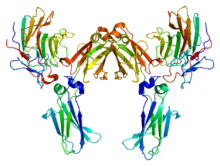

Intracellular antibody-mediated degradation (IAMD) is a neutralization mechanism of intracellular antibody-mediated immunity whereby an effector protein, TRIM21, directs antibody bound virions to the proteasome where they are degraded. As yet, it has only been observed to act against the adenovirus[1] but is likely to also be effective against other non-enveloped viruses.

In IAMD, the neutralization of the pathogen follows a non-cytotoxic mechanism.[1] That is, the infected cell is not attacked as in Antibody-dependent cell-mediated cytotoxicity, instead the virions are rapidly destroyed and the cell may be relieved of infection.
There are a number of reasons why IAMD is so resistant to evasion by mutants through evolution: